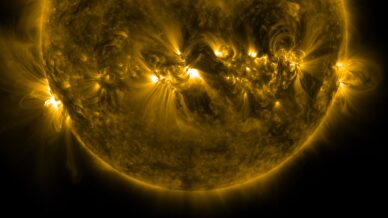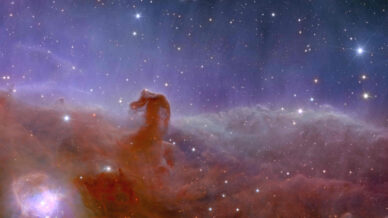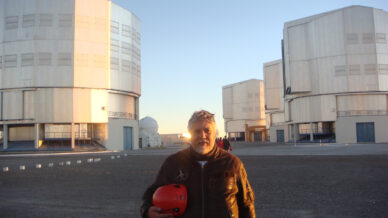
The origin of the Leap Year
Learn the origin of this concept used to count time and build the calendars we use today. Article by Daniel Folha, of IA, on National Geographic Portugal.
Read more

Deepen solar physics using artificial intelligence
Conversation with Ricardo Gafeira, of the Universidade de Coimbra and IA, in the podcast “Palavra de Cientista” about the article he co-authored “Machine learning in solar physics”.
Read more

Inside the coldest places of the Universe
Dark molecular clouds are nebulae that do not emit nor reflect any visible light. Inside them we find a surprising chemical laboratory, that even produces alcohol molecules.
Read more

Euclid and the invisible Universe – two conversations
Ismael Tereno and António da Silva, both researchers at IA, talked about the Euclid space mission and the 95 percent of the Universe still unknown – the dark matter and the dark energy – to Antena 1 public radio and Palavra de Cientista podcast.
Read more

Revealed – and commented – the first images of the Euclid mission
Three IA researchers and members of the Euclid Consortium comment the first coloured images of the Euclid space mission. Dive into these images and learn about them in detail in the article published on National Geographic Portugal.
Read more

Caught in the cosmic web – from galaxies to super-clusters
Galaxies like to be together and socialize, sometimes to the thousands. In galaxy clusters some are dominant, but what keeps them together can’t be seen. Article by Davi Barbosa on National Geographic Portugal
Read more

Unearthing fossils from the Big Bang: the Cosmic Microwave Background
There’s a light that fills the whole Universe. It’s the oldest light. As a fossil, it is an image with information about the origins and up to the first galaxies, explains Elsa Teixeira, in her article on National Geographic Portugal website.
Read more

Venus and other cosmic neighbours and missions to explore them
In an interview for the podcast O Futuro do Futuro from Expresso, Pedro Machado tells us about Venus, Mars and other “neighbouring” planets and moons from our cosmic backyard called Solar System, and about space missions to study them.
Read more

